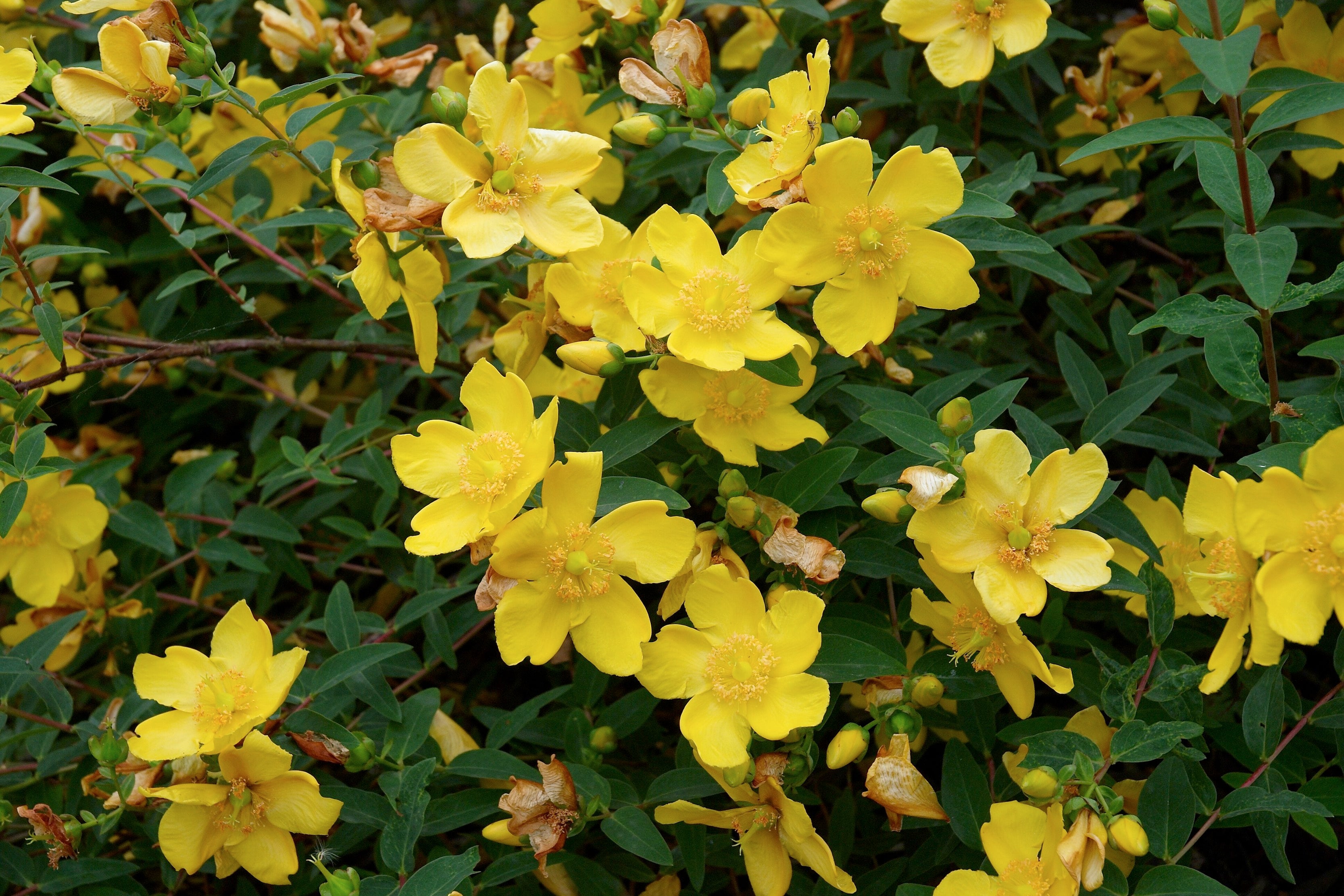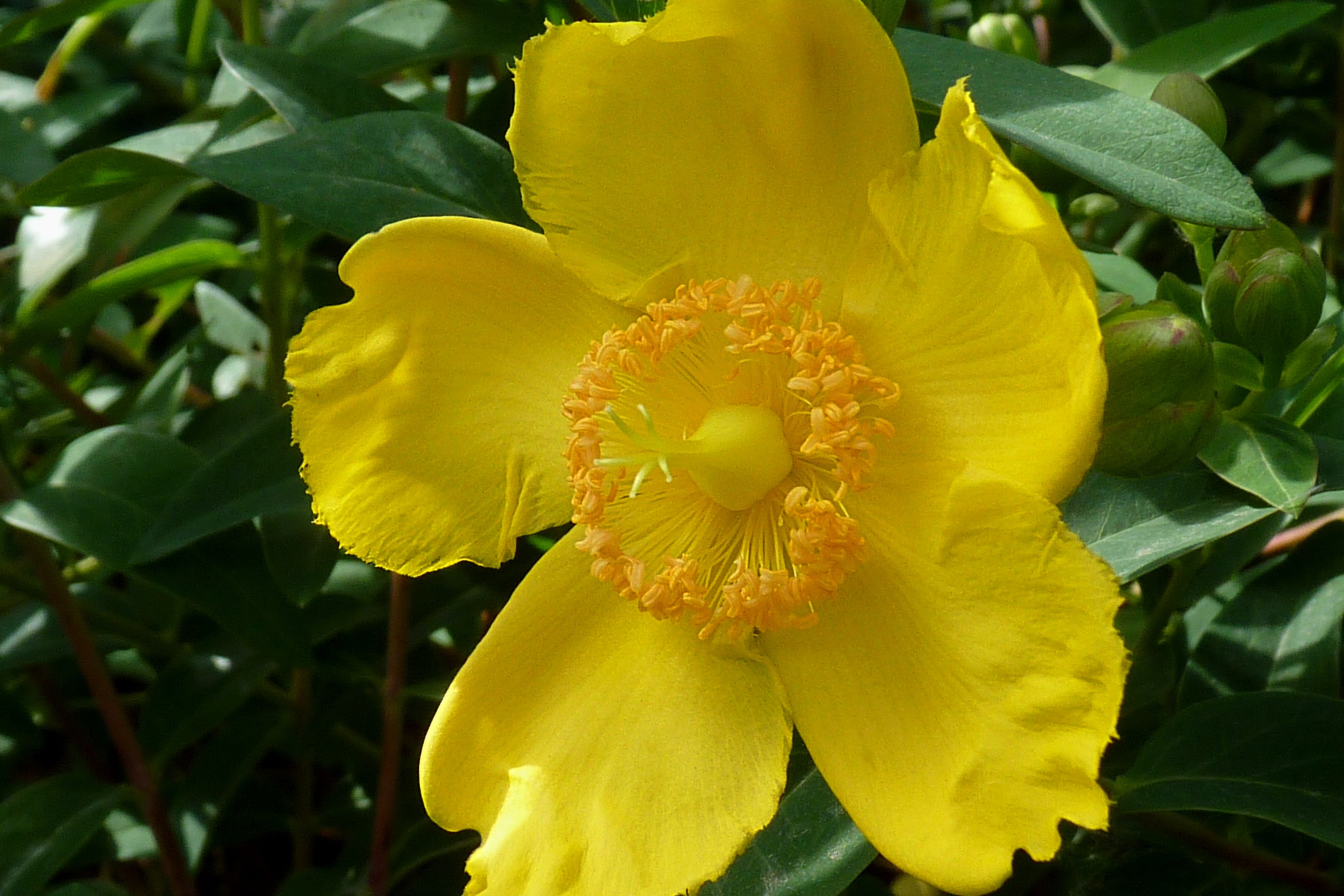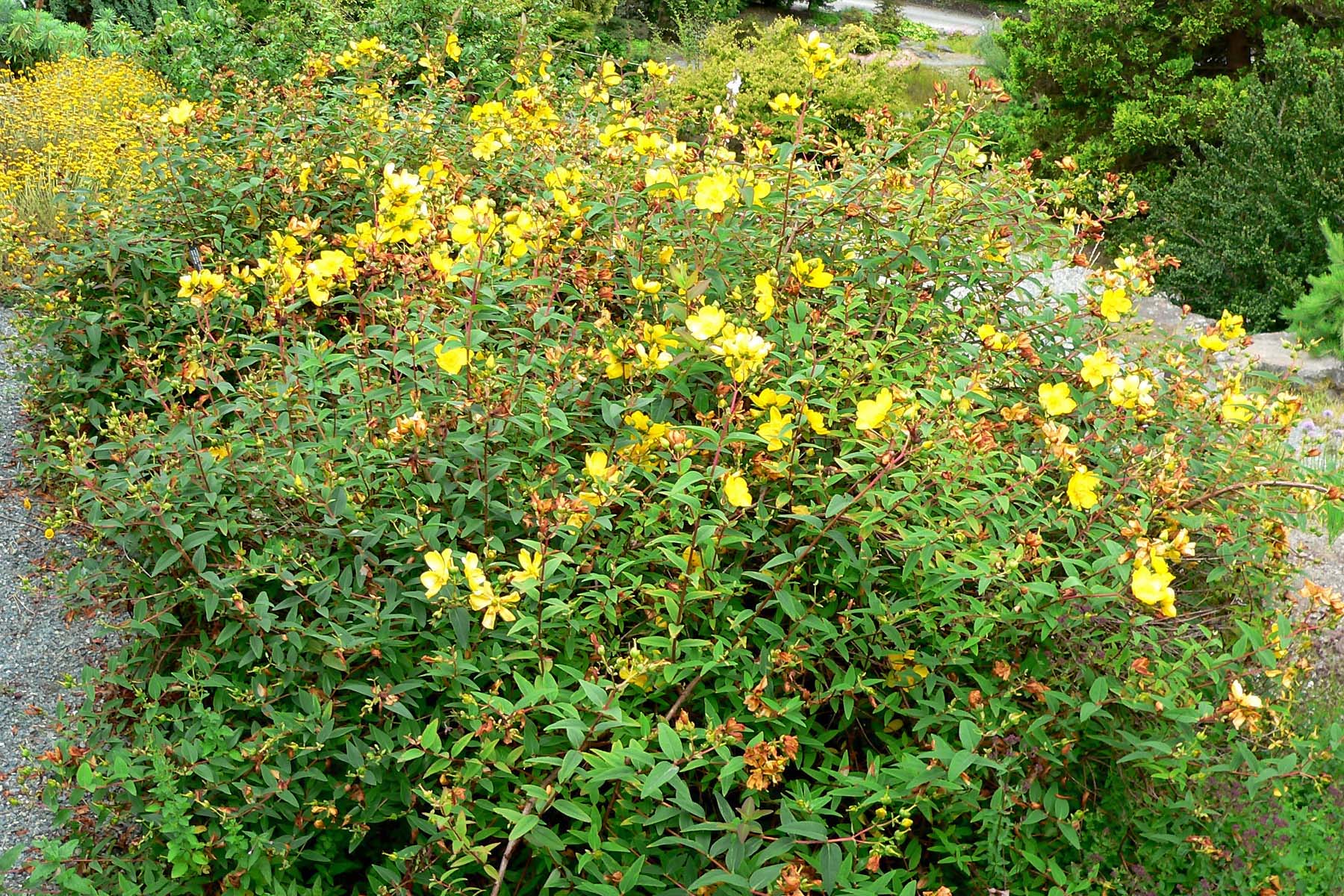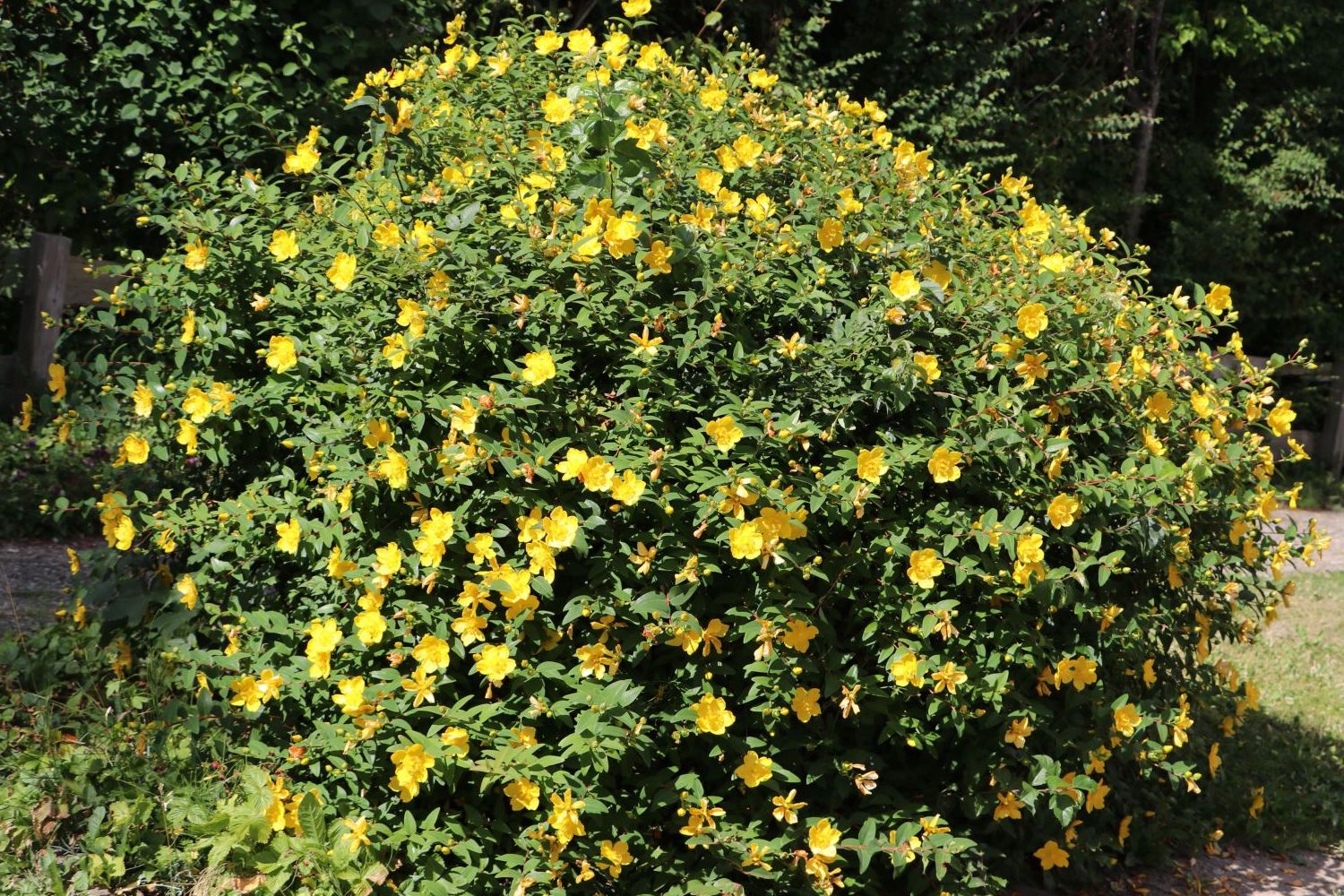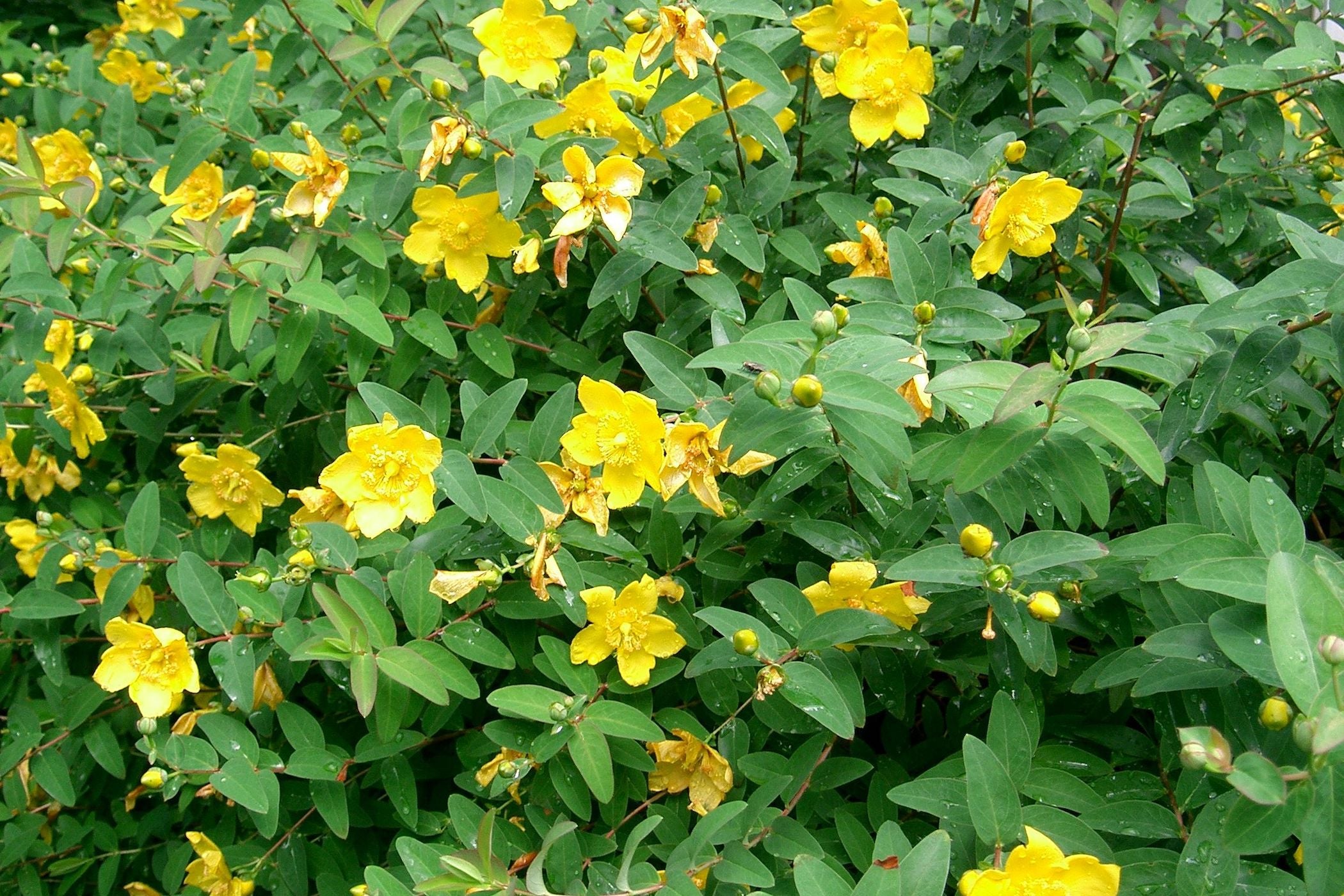Hypericum x hidcoteense 'Hidcote'
Approx. 0.5 litre pot
About this cultivar:
Hypericum x hidcoteense 'Hidcote' is a compact, deciduous shrub that typically grows taller in warm winter climates. Features rose-like, 5-petaled, waxy, cupped, golden yellow flowers with numerous, prominent, dark yellow stamens. Semi evergreen but more often than not evergreen.
Flowers of this popular hybrid are unusually large, slightly fragrant and bloom throughout the summer. Dark green, lance-shaped leaves grow on reddish, twiggy stems. I think the seed head also look pretty good on the reddish stems. A Royal Horticutural Society of Award of Garden Merit plant.
- Position: Full sun, partial shade
- Soil: Almost any soil, grows well in Ballyrobert
- Flowers: July, August, September, October
- Other features: Royal Horticultural Society Award of Garden Merit (RHS AGM), Grows well in Ballyrobert
- Hardiness: Fully hardy - grows well in Ballyrobert! H5 - Hardy in most places throughout the UK even in severe winters (-15 to -10°C)
- Habit: Clump forming, bushy
- Foliage: Semi evergreen
- Height: 90 - 150 cm (3 - 5 ft)
- Spread: 90 - 150 cm (3 - 5 ft)
- Time to full growth: 2 to 5 years
- Plant type: Herbaceous Perennial, shrub
- Colour: Green, yellow
- Goes well with: -
About this genus:
Hypericum is a genus of flowering plants in the family Hypericaceae. The genus name comes from the Greek words ‘hyper’ meaning above and ‘eikon’ meaning picture in reference to the practice of hanging flowers from this genus above images, pictures, windows or heaths to ward of evil spirits. They were also gathered and burned to ward off evil spirits on the eve of St. John's Day, thus giving rise to the genus common name of St. John's wort. These days it is an economically important medicinal crop plant with demonstrated anti-viral, anti-depressive and anti-cancer properties.
It is one of the 100 largest genera of flowering plants- there are over 490 species described and it is difficult to generalise! Hypericum vary from herbaceous annual or perennials 5 cm tall to shrubs and small trees up to 12 m tall and have a nearly worldwide distribution, missing only from tropical lowlands, deserts and polar regions. A wide net indeed.
If you don’t have a DNA sample handy you can try and identify them by the opposite, simple oval, either deciduous or evergreen leaves or pale to dark yellow, 0.5–6 cm diameter, five petalled flowers. The fruit is usually a dry capsule which splits to release the numerous small seeds.
What does this mean for the gardener? Well… since it is hard to generalise – I won’t! See each plant on a case by case basis!

